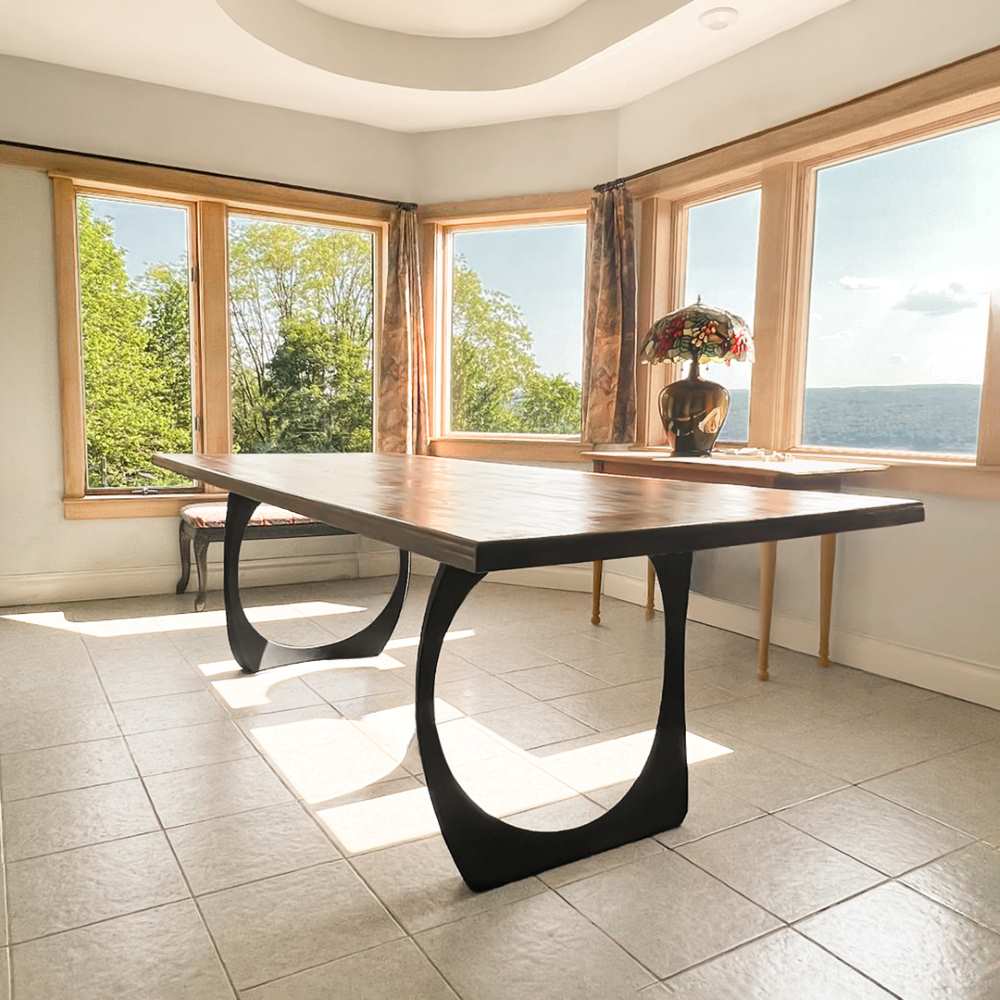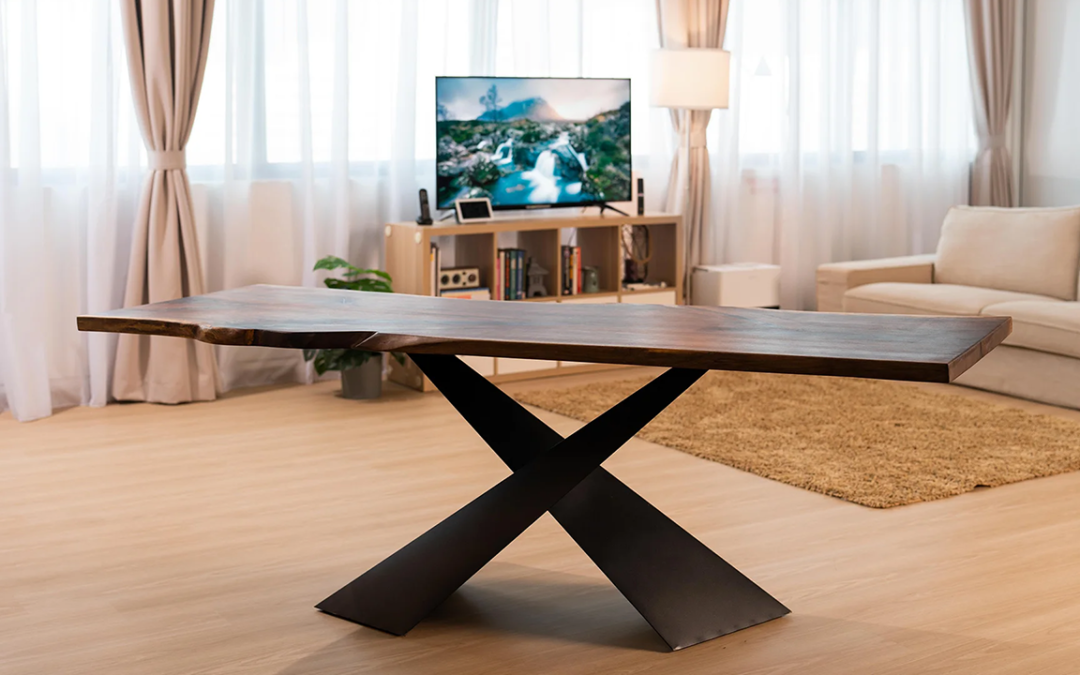Expert Tips for Setting Up Eating Area Table Legs for Optimum Stability
When it comes to mounting dining space table legs, achieving maximum stability is paramount for both functionality and aesthetic appeals. What particular techniques can boost stability also further?
Pick the Right Legs
When picking the suitable legs for your dining-room table, it is crucial to consider both performance and appearances. The legs you choose will considerably affect the total layout and security of the table. Initially, evaluate the table's intended use; if you expect regular events, stronger legs, such as those made from solid timber or steel, might be better, as they provide increased durability and support.
Next, think about the height and style of the legs in relation to the tabletop. Conventional table commonly range from 28 to 30 inches in height, so ensure the legs align with this standard for convenience. The design of the legs need to enhance the style of the tabletop-- whether it be modern-day, rustic, or traditional. Conical legs can add a contemporary touch, while transformed legs may convey an extra traditional aesthetic.

Select Appropriate Hardware
Exactly how can the appropriate hardware improve the security and long life of your dining space table? The choice of appropriate equipment is important to guaranteeing that the legs of your table are safely connected and able to withstand routine use. High-quality screws, screws, and brackets offer the needed stamina to sustain the weight of the table, in addition to any type of added lots placed upon it throughout celebrations or meals.
When choosing screws, go with those made from long lasting materials such as stainless steel or brass, which resist rust and maintain honesty gradually. The length of the screws is equally crucial; they must penetrate deeply right into the table's structure without endangering integrity. For bolted connections, consider making use of lock washing machines to avoid loosening up due to vibration or movement.
In addition, making use of edge brackets can add added support, particularly for larger tables or those with heavier tops. These braces distribute weight evenly and aid keep the table's form. Ensuring that the equipment you choose is proper for the certain materials of your table will certainly better improve its general stability and durability, permitting you to appreciate your dining experience for many years to find.
Ensure Appropriate Alignment
Appropriate positioning of dining-room table legs is important for both visual appeal and functional security. Misaligned legs can lead to an uneven table top, which may not only be aesthetically unappealing but additionally jeopardize the table's use. To accomplish optimal alignment, start by measuring the distance from the table's corners to the leg attachment points. This guarantees that each leg is located equidistant from the edges, developing a balanced look.
Use a level during installation to validate that each leg is perpendicular to the tabletop. This step is important, as also minor inconsistencies can rise into considerable security concerns with time. It is suggested to mark the desired leg settings on the bottom of the table with a pencil or masking tape before securing them. This method works as an aesthetic overview, permitting changes as required.
In addition, ascertain the placement after the first screws are tightened up, as changes might be essential prior to totally safeguarding the equipment. By focusing on correct placement, you not just boost the table's total layout yet additionally ensure that it remains functional and stable for several years to find.

Consider Weight Distribution
After ensuring correct positioning of the dining area table legs, it is necessary to think about weight circulation to improve stability and functionality. dining room table legs. Proper weight circulation is vital in preventing ensuring and tottering that the table can sustain its designated load without danger of tipping or collapsing
When placing the legs, ensure they are put at equivalent distances from the center of the table to uniformly distribute the weight across the framework. Take into consideration the weight of the table top and any items that will often hinge on it, such as ornamental pieces or tabletop devices. Tables with much heavier surface areas should preferably have legs located closer to the corners, as this takes full advantage of the base webpage of assistance and reduces the threat of instability.
Additionally, if the table is meant for usage in a high-traffic location, think about using much heavier products for the legs or including stabilizing elements, such as cross-bracing or a lower rack - dining room table legs. These adjustments can help keep balance and prevent moving during usage. Ultimately, a well-considered weight distribution technique will dramatically enhance the table's overall performance, ensuring it stays a useful and attractive centerpiece for your dining space
Test Stability Before Use
Evaluating the security of the eating space table prior to use is a crucial step that ought to not be forgotten. Ensuring that the table is secure and stable can stop accidents and lengthen the life-span of the furnishings. Begin by using mild pressure to various points on the table surface. Press down on the facility and after that along the sides, observing any type of wobbling or moving. If the table shows instability, identify the legs or joints that might call for modification.
Following, inspect that all screws and bolts are tightened up effectively. Loosened connections can lead to instability and prospective damage over time. If needed, utilize wood adhesive on joints to enhance security, making certain to permit adequate drying time.

Verdict
To conclude, the setup of eating room table legs calls for careful factor to consider of products, hardware, alignment, and weight circulation review to attain maximum stability. By choosing top quality bolts and strong legs, guaranteeing accurate alignment, and distributing weight equally, the structural stability of the table can be significantly improved. Carrying out a stability test before normal usage better makes sure look at this web-site that the table will certainly stand up to day-to-day stress, therefore giving a secure and trusted eating experience.
When it comes to mounting eating space table legs, accomplishing maximum stability is critical for both functionality and aesthetic appeals. The legs you select will considerably impact the overall design and security of the table (dining room table legs). Common eating tables usually range from 28 to 30 inches in height, so ensure the legs straighten with this criterion for convenience.Appropriate alignment of eating area table legs is crucial for both visual appeal and functional security.In final thought, the installation of dining area table legs calls for mindful factor to consider of materials, hardware, placement, and weight distribution to accomplish optimum security